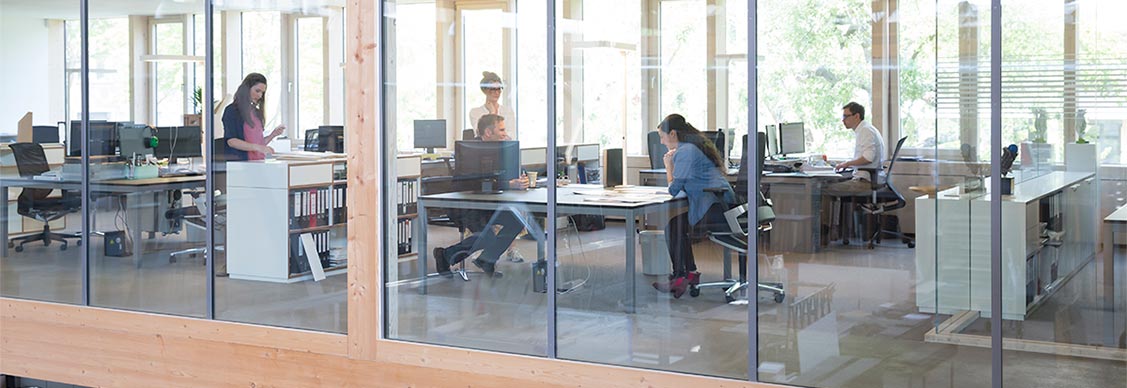Flex office space market poised for more rapid growth
Nearly half of office tenants plan to increase flex space usage in the future
With tenants realizing that pandemic-driven uncertainty is set to continue, they’re increasingly incorporating flex space into their workplace strategies as they move toward a more agile footprint that adapts to their changing needs.
JLL’s 2021 Global Flex Space Report reveals that 41% of tenants expect to increase their use of flex space as part of a post-pandemic work strategy.
“Employers and employees have very different preferences in terms of managing the return to the physical office,” says Scott Homa, Senior Vice President and Director of U.S. Office Research at JLL. “Companies can reconcile these differences with flex space. Looking ahead, we think the broader concept of flexibility will be critical for the office market—not just in terms of how spaces are designed and used, but also the physical locations where people gather and work.”
63% of employees prefer a hybrid model vs. working exclusively in an office or at home
In the simplest of terms, flexible space helps companies become more agile by enabling them to lease smaller (or sometimes larger) office footprints that are available for relatively short time periods via a streamlined transaction process. Even in the decade prior to the pandemic, the global flex space sector was expanding rapidly at an average annual rate of 22%, much faster than the conventional office market over the same time period. JLL researchers say there are four main factors driving intense tenant interest in flexible space:
Cost reduction. Pre-built spaces that are move-in ready can reduce initial out-of-pocket expenses, boost efficiency, and potential drive down total occupancy costs.
Agility. Flex space allows organizations to ramp up faster and hit the ground running when they launch new initiatives or grow faster than anticipated. In the event of an unexpected event like a pandemic, flexible space allows companies to pivot more quickly to remote or hybrid work models without being trapped in a rigid, long-term lease.
Innovation and collaboration. Unlike fully remote setups, flex arrangements encourage innovation by giving employees opportunities to interact in impromptu ways. Such interaction encourages cross-pollination of ideas and can lead to the development of new business concepts.
Talent attraction. Flex space can give companies an edge in the war for talent by helping them quickly expand into a submarket with desirable workforce demographics or reduce commute times for existing employees.
Looking for more insights? Never miss an update.
The latest news, insights and opportunities from global commercial real estate markets straight to your inbox.
“The increased demand for flex space is structural and not solely a result of the pandemic. As a result, we are seeing landlords and building owners including both flexibility and hospitality services into their portfolios,” says Homa. “They are exploring multiple methods of driving foot traffic, generating leasing prospects, and delivering modern amenities to tenants within these new flex spaces.”
Jacob Bates, Managing Director, Head of Americas Flexible Space at JLL, agrees that tenants have started to see flex as a key part of their overall business strategy. “Companies are looking for the agility that flex space provides,” he says. “Historically, businesses have been able to increase or decrease employee headcount according to market conditions, but they’ve felt stuck in long-term leases and space that no longer serves their needs. After all, you can’t lay off your real estate in times of trouble! But when a tenant starts putting a significant percentage of a real estate portfolio into flex space, they gain a new level of flexibility both from a cost and a space perspective that allows them to match their footprint to the changing needs of their talent base.”
Plenty of room to grow
At the moment, only three percent of the occupiers that JLL surveyed use flexible space for more than a tenth of their total office footprint. Still, JLL expects flexible workspace to continue its grow trajectory from a sliver of the overall market to a critical, mainstream element of the commercial real estate landscape.
“The adoption rate will vary among industries, but we still expect flex space to represent 30% of the market by 2030,” notes Bates. “I would say that high-tech and creative companies may integrate flex space into their office portfolios more quickly, although even we’ve seen even financial services firms move a bit more aggressively to add flex space during the pandemic.”
As the flexible workplace goes mainstream, its adoption is spreading beyond conventional office buildings into retail shopping centers, multi-housing developments, and other property types. “There’s a tremendous amount of underutilized retail space everywhere, from ground-floor urban environments in central business districts to suburban shopping malls,” explains Homa. “When you marry that supply with demand for vibrant live-work settings encompassing residential, retail, office, and entertainment uses, you create symbiotic relationships. There are win-win opportunities to create flexible workspaces not just in office buildings, but in a wide range of other places.”
Contact Jacob Bates
Head of Americas Flexible SpaceWhat’s your investment ambition?
Uncover opportunities and capital sources all over the world and discover how we can help you achieve your investment goals.
